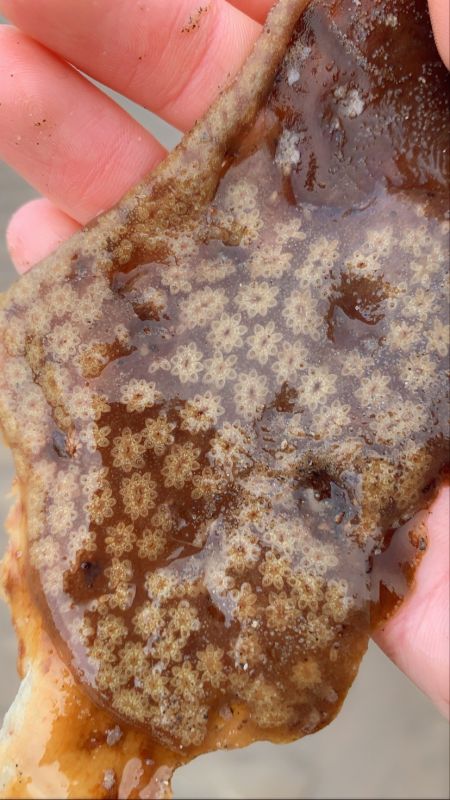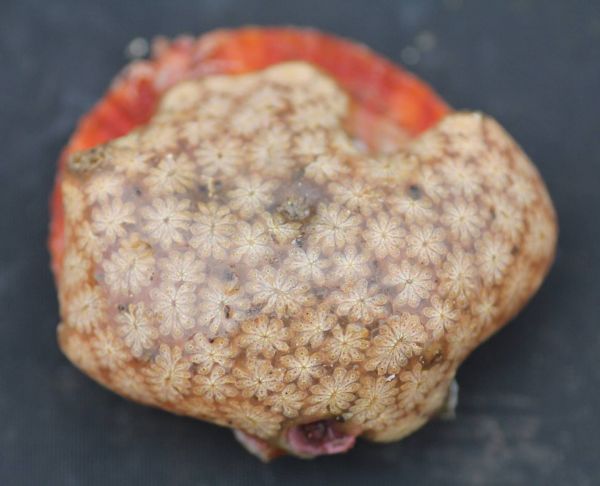Record and report any natural finds you feel are unusual. That is the request from the Ecosystem Policy Team at the Department of Environment, Food and Agriculture after Lydia Riddell, Biodiversity Project Officer, spotted an unfamiliar sight at the Ayres National Nature Reserve. She tells us more:
How often do you take the time, while out in nature, to really stop, look and question what you find?
This week, while on my daily exercise at the Ayres Nature Reserve, I picked up an unusual piece of kelp which had washed ashore. The patterns on the kelp were eye-catching, something I’d never seen before, and instantly reminded me of 70s' retro wallpaper. I took a picture to circulate to friends and colleagues to see if anyone knew what it was.

Lydia's find
I could easily have picked up the piece of kelp, thought it looked strange and thrown it back in the sea. However, with so many resources available to us, both on-Island and online, I knew I could find the answer within a day or so. It is so important and easy to observe, question and note what we find in nature and, as the majority of us have access to a camera or recording device, everyone has the chance to be a citizen wildlife journalist or even a citizen scientist.
Through my inquiries, I learnt that what I had found was a Botryllus, a genus of the colonial ascidian, collectively and more commonly known as a seasquirt.
While this particular species, Botryllus schlosseri, is fairly frequently found when doing offshore surveys, they are not so commonly found on the beach or intertidally.
What is interesting about this recording is that while the find itself may seem relatively insignificant, it provided us a chance to check the seasquirt against other non-native members of colonial seasquirts (such as the Didemnum vexillum, or carpet seasquirt) to ensure that our waters were not being polluted by an invasive species.
So, through a casual observation that took minimal effort, I was able to contribute to the Island’s nature record database, its continued biosecurity, and also share the interesting information with my family and friends so they, too, could learn more about what we might find in our waters.

An example of the seasquirt
If you find an ‘unusual’ species, or something you think looks out of the ordinary on our Manx shores or hills, we encourage you to note your observation, and get in touch with an expert, as you never know what new information you could be providing.
Often just a picture, date and location will provide an interesting insight into how our environment is constantly changing and adapting.
If you think you have found something interesting, please feel free to email ecopolicy@gov.im
Who knows: you might become an expert yourself.
Follow all Covid-19 advice issued by the Isle of Man Government.


